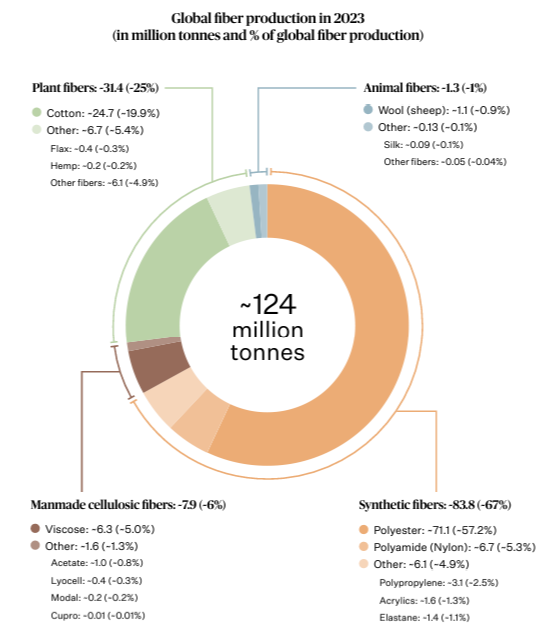Image credit: Muntaka Chasant/Shutterstock
In September 2024, the Textile Exchange released a deep-dive into the market trends for fibres in the fashion industry in their latest edition (the 11th) of their annual Materials Market Report.
The report shows some concerning trends that highlight our dependency on the petroleum-derived synthetic fibres that are destroying our planet.

Here are some of its key takeaways:
- Synthetics continue to dominate: The production of virgin fossil-fuel based synthetic fibres increased from 67 million tonnes in 2022 to 75 million tonnes in 2023. Polyester remained the most produced fibre globally, accounting for 57% of global market production.
- Cotton production saw a slight decline: total global volumes fell from 25.1 million tonnes in 2022 to 24.4 million tonnes in 2023. However, the share of cotton produced under sustainability programs remained steady, accounting for 29% of all cotton produced.
- Certified wool climbs: there were positive trends for wool produced under standards, with the share increasing from 4.2%-4.8% between 2022 and 2023. Recycled wool continued to account for around 6% of the global wool market.
- Certified mohair and cashmere reached almost half of market share: certified fibres such as mohair and cashmere saw notable growth, both with market shares of 47%
- Manmade cellulosic fibre production increased: overall MMCF production increased from 7.4million tonnes in 2022 to 7.9 million tonnes in 2023, representing 6% of the global fibre market.
We think this is reason enough to turn back to nature. Don’t you? Click here to read the full report.